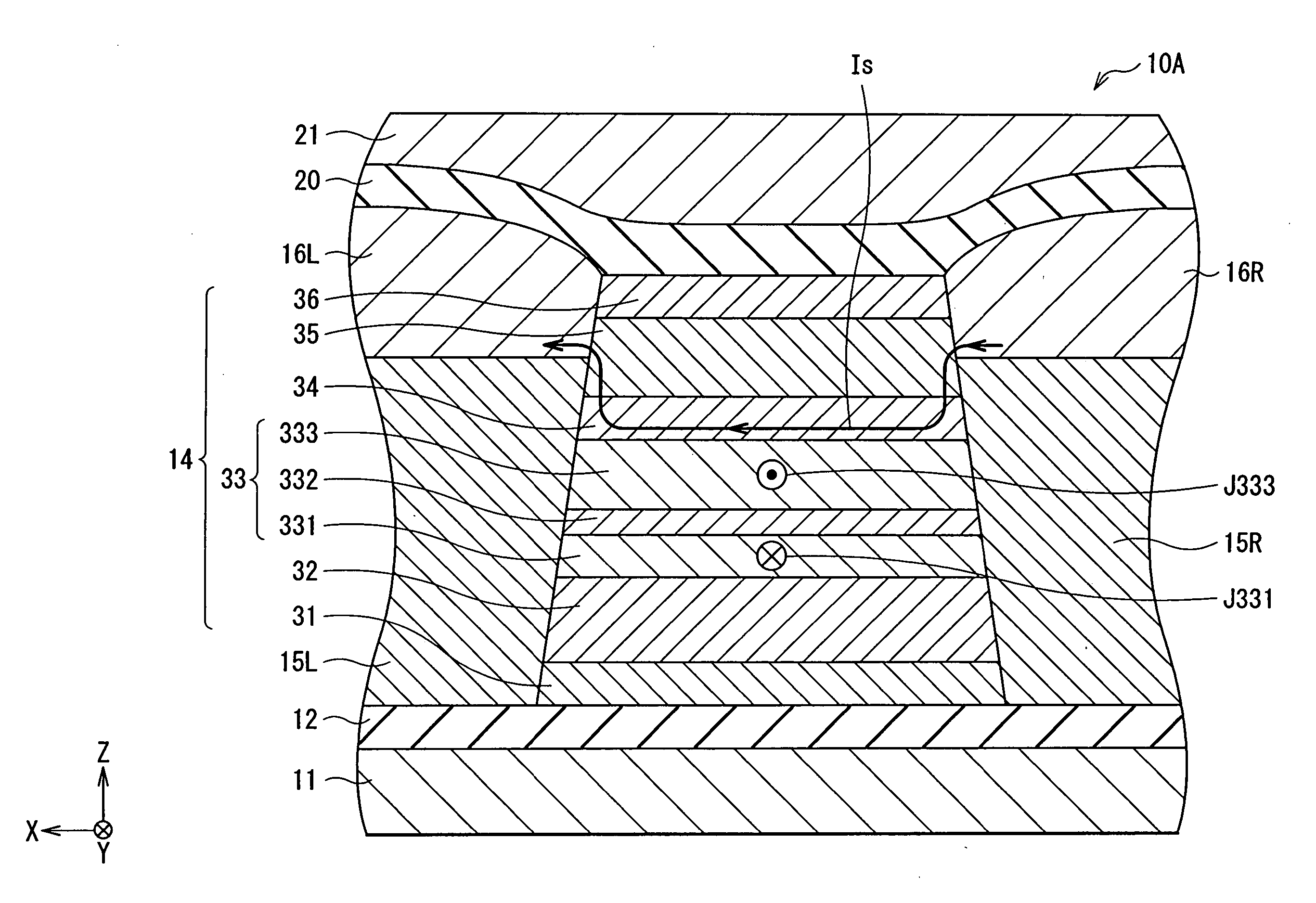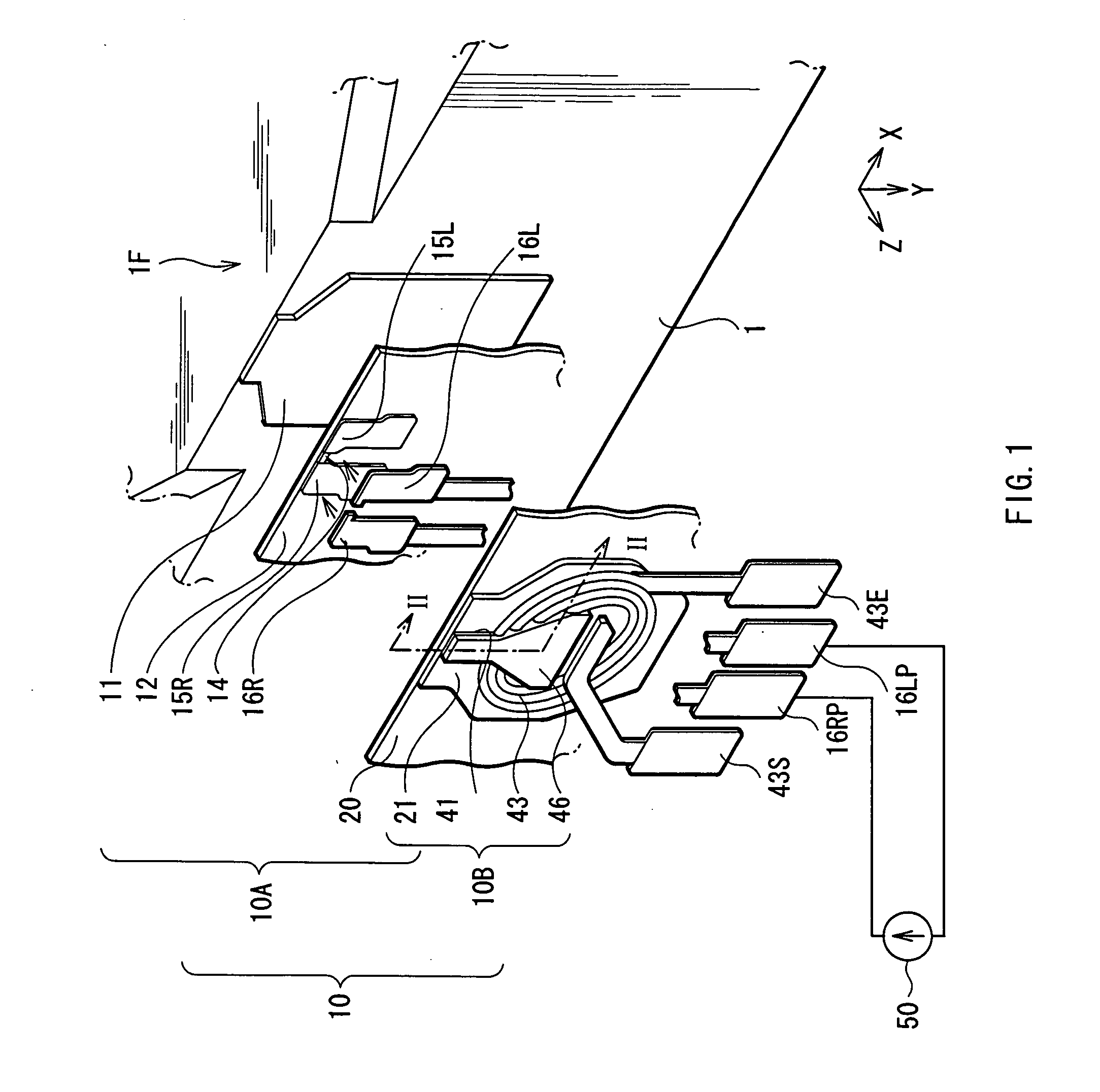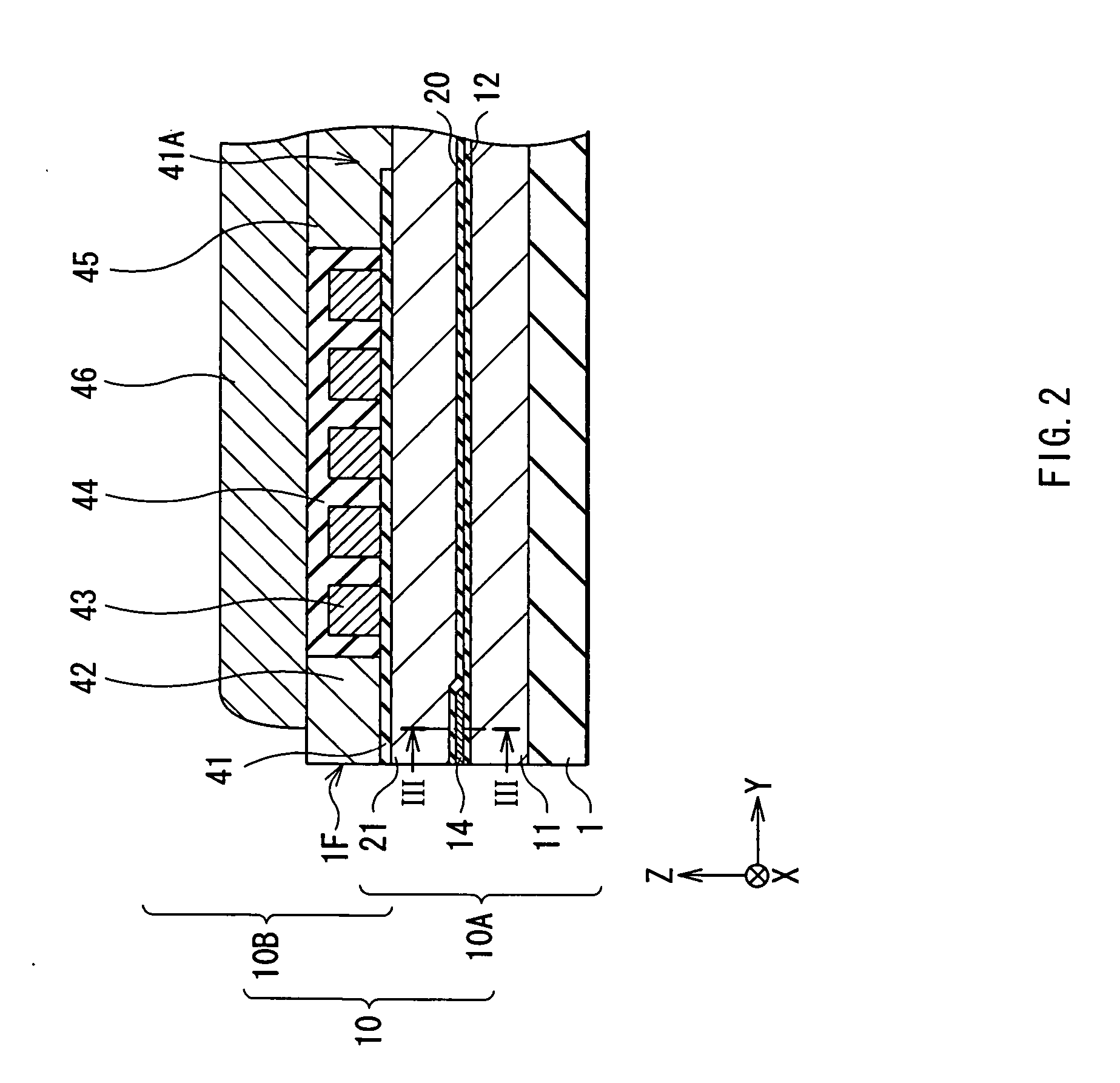Magnetoresistive device, thin film magnetic head, head gimbal assembly, head arm assembly, magnetic disk drive and method of drive magnetoresistive device
a technology of magnetoresistive devices and thin films, applied in the direction of magnetic recording, instruments, data recording, etc., can solve the problems of insufficient heat resistance, insufficient output as a reproducing head, and insufficient output characteristics of thin films magnetic heads, so as to reduce the thickness of magnetoresistive films, the effect of reducing the thickness of the magnetoresistive film and sufficient output characteristics
- Summary
- Abstract
- Description
- Claims
- Application Information
AI Technical Summary
Benefits of technology
Problems solved by technology
Method used
Image
Examples
first embodiment
[0028] At first, referring to FIGS. 1 through 3, the structure of a thin film magnetic head comprising a magnetoresistive device according to a first embodiment of the invention will be described below.
[0029]FIG. 1 is an exploded perspective view of a thin film magnetic head 10 which comprises a reproducing head portion 10A as a magnetoresistive device according to the embodiment, and is formed on a side of a slider in a magnetic disk drive such as a HDD (Hard Disc Drive). FIG. 2 is a sectional view taken along a line II-II of FIG. 1 in the direction of an arrow. FIG. 3 is a sectional view taken along a line III-III of FIG. 2 from the direction of an arrow. FIG. 2 and FIG. 3 show sectional views orthogonal to each other.
[0030] As shown in FIGS. 1 and 2, the thin film magnetic head 10 comprises the reproducing head portion 10A and a recording head portion 10B which are laminated in order as one unit on a side of a block-shaped base substrate 1 which is made of AlTiC (Al2O3.TiC) or ...
second embodiment
[0056] Next, referring to FIG. 4, a thin film magnetic head according to a second embodiment of the invention will be described below.
[0057]FIG. 4 shows a sectional view of the reproducing head portion 10A in the thin film magnetic head 10 according to the embodiment, and corresponds to FIG. 3 in the first embodiment. In FIG. 4, like components are donated by like numerals as of FIG. 3.
[0058] In the following description, only points of the structure of the reproducing head portion 10A and a method of driving the reproducing head portion 10A according to the second embodiment which are different from those in the first embodiment will be mainly described.
[0059] In the first embodiment, the magnetization fixed layer 33 is formed so as to satisfy the conditional expression (1) and a driving method in this case is described above. On the other hand, in the embodiment, the magnetization fixed layer 33 is formed so as to satisfy the following conditional expression (2).
−1.5 mA≦(Ms2×T...
example 1
[0065] In the example, a sense current of 4 mA was applied to the MR film 14 with the following structure under an environmental temperature of 130° C. to examine how the magnetization directions J331 and J333 of the outer pinned layer 331 and the inner pinned layer 333 changed. The results are shown in Table 1.
TABLE 1REVERSAL RATE OFMAGNETIZATION DIRECTION[%]THICKNESSTHICKNESSDIRECTION OF SENSE CURRENTOF OUTEROF INNER+X DIRECTION−X DIRECTIONPINNEDPINNED(ASSISTING(ASSISTINGCONDITIONLAYERLAYERΔ (Ms × T)INNER PINNEDOUTER PINNEDNO.[nm][nm][mA]LAYER)LAYER)11.502.000.76010021.501.950.6808831.501.900.6005741.501.850.5372851.501.800.45141461.501.750.3822071.501.700.3034081.501.650.2348091.501.600.15570101.501.550.08880111.501.500.001000121.551.50−0.081000131.601.50−0.151000141.651.50−0.231000151.701.500.301000161.751.50−0.381000171.801.50−0.451000181.851.50−0.531000191.901.50−0.601000201.951.50−0.681000212.001.50−0.761000
[0066] The MR film 14 of the example included the base layer 31 mad...
PUM
 Login to View More
Login to View More Abstract
Description
Claims
Application Information
 Login to View More
Login to View More - R&D
- Intellectual Property
- Life Sciences
- Materials
- Tech Scout
- Unparalleled Data Quality
- Higher Quality Content
- 60% Fewer Hallucinations
Browse by: Latest US Patents, China's latest patents, Technical Efficacy Thesaurus, Application Domain, Technology Topic, Popular Technical Reports.
© 2025 PatSnap. All rights reserved.Legal|Privacy policy|Modern Slavery Act Transparency Statement|Sitemap|About US| Contact US: help@patsnap.com



